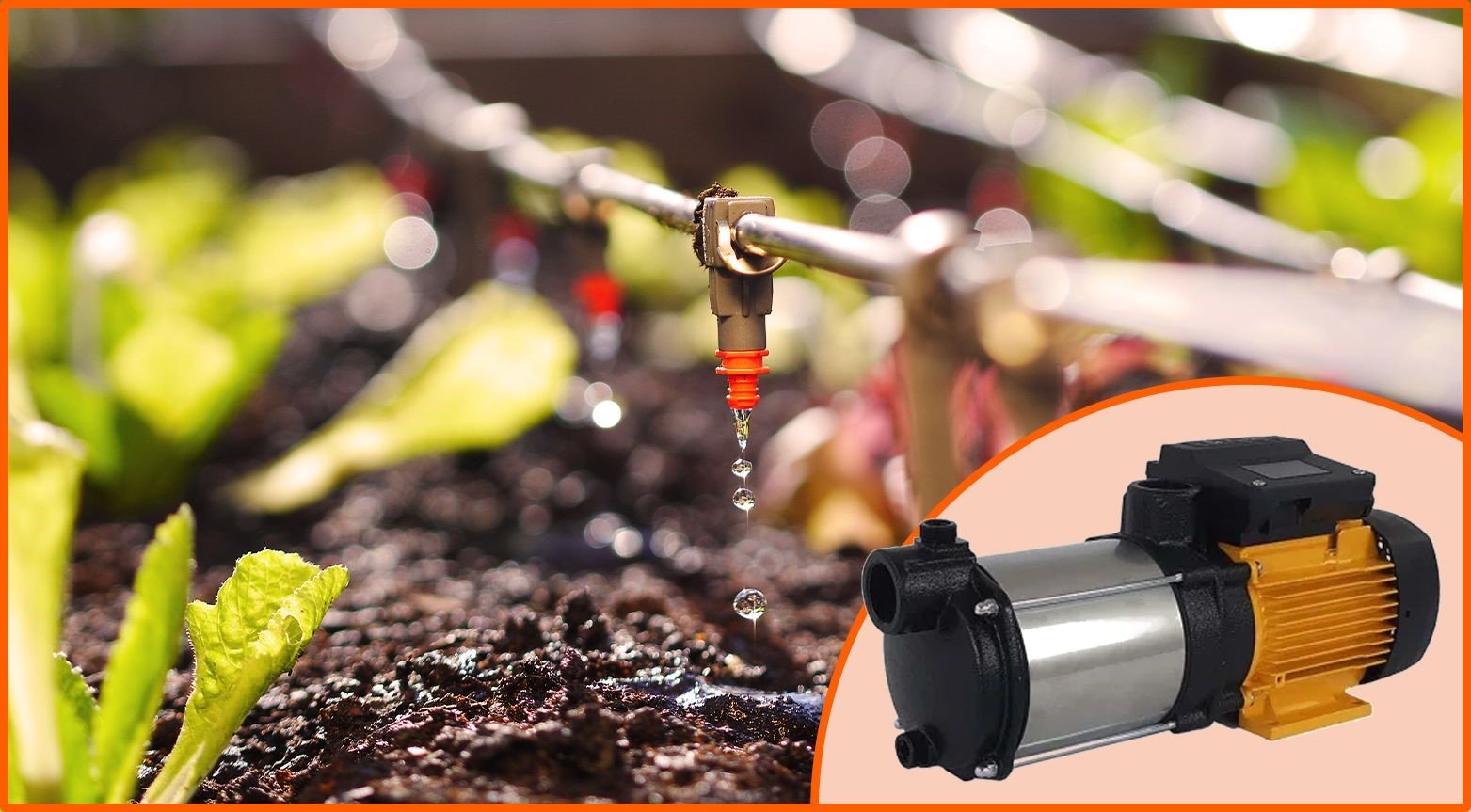Home garden irrigation systems: surface pumps for drip irrigation.
For domestic drip irrigation systems, surface pumps or submersible pumps can be used depending on the source of supply.
- The urgency to adopt systems that help preserve water resources also influences everyday behaviour, such as domestic irrigation.
- Drip irrigation is a sustainable and beneficial choice in several respects.
- The pumps for a drip system can be surface pumps or submersible pumps: the choice depends mainly on the suction depth.
Home irrigation systems: the benefits of sustainable behaviour.
Even when it comes to choosing between irrigation systems for a home garden, it is important to adopt a sustainable attitude and try not to waste water. In this respect, the drip irrigation system is an excellent solution.

Unlike spray or sprinkler irrigation systems, the water is distributed directly to the roots of the plants, controlling the quantity and frequency of irrigation according to the needs of the crop, soil type and climate. This precise irrigation system brings with it a number of other advantages in addition to saving water volume. Remaining on the subject of sustainability, it should be remembered that drip irrigation is a low-pressure system that therefore saves on the energy costs of the system. If, on the other hand, we consider the health of the plants, the fact that during irrigation the leaves are not watered but only the roots of the plants means less humidity and therefore a reduction in the development of fungal and bacterial diseases.
Apart from the advantages of a sprinkler irrigation system, let us now see which irrigation pumps are most suitable for this type of system.
Drip irrigation pumps: how to choose the right type.
A drip irrigation system requires the use of a pump when rainwater collected in a cistern or tank is to be used, or when water is to be taken from a well. The choice of pump type for the drip system must mainly take into account the source of supply, or rather the depth from which the water will be taken. Once this has been established, the choice will be between a surface pump for drip irrigation or a submersible pump.Recovering rainwater to use for irrigation in the garden is a widespread practice and indeed encouraged in many contexts. A surface water pump can be used to draw water from a cistern, tank or storage tank. This type of pump can, in fact, draw water up to a maximum depth of 8 metres. In the case of greater depths, as can easily occur if water is drawn from a well, a submersible pump must be used instead.
Home irrigation with a surface pump: how it works and what to look out for.
The difference between a submersible pump and a surface pump is very simple: the submersible pump works submerged in liquid and draws it from a grid at the bottom. The surface pump draws the water through a pipe. The surface pump must be sized taking into account the needs of the system. The main parameters to consider are the head, i.e. the height in metres between the delivery point and the pump, and the flow rate, i.e. the volume of water available in the unit of time.
There are other characteristics worth considering:
There are other characteristics worth considering:
- Multicellularity. A multi-cell surface pump is a multistage pump, i.e. a pump with several impellers positioned on the same axis. Multistage pumps are an excellent solution in terms of performance as multiple impellers also greatly increase the head compared to single-impeller pumps;
- the choice of materials. The use of particularly resistant materials for both the pump casing and the impellers, in particular stainless steel, which is synonymous with durability and maximum resistance to corrosion, represents a considerable added value;
- to prevent damage to the pump, it may be a good idea to install a prefilter between the suction pipe and the pump, so that solid particles and any debris in the water are retained;
- dry running, i.e. operating without pumping liquid, is known to be a considerable danger to a pump due to overheating. Level probes, pressure switches or a simple check or non return valve installed at the suction can avoid this problem.

























